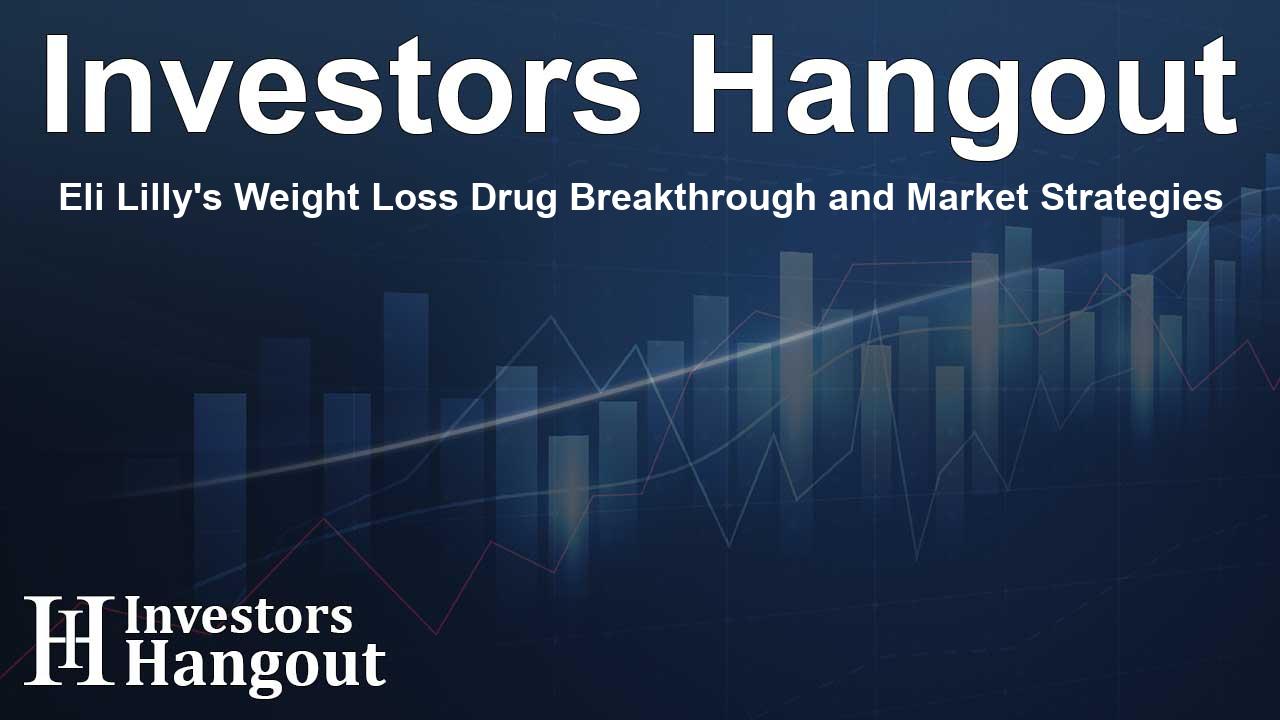Eli Lilly's Weight Loss Drug Breakthrough and Market Strategies

Eli Lilly's Surge in Stock Performance
Eli Lilly (NYSE: LLY) has experienced remarkable growth over the last year, primarily driven by its strong foothold in the rapidly expanding pharmaceutical sector of weight loss medications. The company's tirzepatide, marketed as Mounjaro for type 2 diabetes and Zepbound for weight management, has seen soaring demand. This growing interest has unfortunately outstripped supply, causing challenges not only for Lilly but also for its competitor that offers a comparable product.
Recently, Eli Lilly and its stakeholders received encouraging news that could significantly enhance the company's market position and potentially lead to substantial revenue increases. Here's what we need to know.
The Rise of Compounding Pharmacies
Compounding pharmacies have benefitted tremendously in recent months by providing alternatives to Lilly's weight loss drugs. The FDA had placed Mounjaro on its shortage list for approximately two years, with Zepbound being added recently. With these listings, pharmacies have been allowed to create and distribute copies of these medications.
However, a recent development could change everything for Eli Lilly. Just a few days ago, the FDA lifted tirzepatide from its shortage roster, which stops the compounding pharmacies from producing their equivalents within two months. In contrast, Novo Nordisk's semaglutide continues to remain on the shortage list, thereby allowing compounding pharmacies to persist with their versions.
This shift may open the floodgates for billions in potential revenue for Eli Lilly as the company can now meet the demand that had previously diverted patients to compounding alternatives.
Affordable Options for Patients
Addressing affordability concerns, Eli Lilly took proactive measures by launching single-dose vials of Zepbound, which are priced significantly lower than its counterparts in the incretin category. This product adjustment not only makes the medication more accessible but also centers around easier manufacturing processes.
Investments Driving Manufacturing Growth
Lilly's commitment to enhancing its manufacturing capabilities has been impressive. Since 2020, the company has poured over $18 billion into production capacity. This strategic investment positions Lilly favorably amid forecasts indicating an explosion in the weight loss drug market, potentially reaching $100 billion by the end of the decade.
Lilly's proactive approach to resolving supply issues ahead of its main rival could grant the company a competitive edge, encouraging more doctors and patients to choose its offerings, thereby further amplifying revenue opportunities.
Evaluating Eli Lilly’s Stock Appeal
What does all this mean for potential investors? Despite a notable increase of 63% in stock value over the past year, Eli Lilly remains an attractive option. With a forward price-to-earnings ratio of 54, it may seem relatively exorbitant for a pharmaceutical company. However, as Lilly continues to grow, particularly in the burgeoning market for weight loss medications, its valuation could be justified for long-term investors keen on capturing future growth.
The recent developments reiterate that now is an opportune moment for Eli Lilly investors, as the future looks promising for this innovative pharmaceutical company.
Is Now the Right Time to Invest?
Before investing in Eli Lilly, consider your strategy and long-term goals. Researching current market conditions and forecasting can guide your decision-making process on whether to enter this exciting phase in Lilly's growth trajectory.
Frequently Asked Questions
What factors contributed to Eli Lilly's stock increase?
Eli Lilly's stock has surged due to its strong market position in weight loss drugs and the resolution of supply issues, allowing the company to meet high demand.
How has Eli Lilly addressed the drug shortage problems?
Recently, the FDA removed tirzepatide from its shortage list, enabling Lilly to produce and supply its weight loss medications without competition from compounded versions.
What potential growth is expected in the weight loss drug market?
The weight loss drug market is projected to significantly grow, possibly reaching $100 billion by the end of the decade, enhancing profit potential for companies like Eli Lilly.
What measures has Eli Lilly taken to improve affordability?
Lilly introduced single-dose vials of Zepbound that are priced lower than competing treatments, making it more accessible for patients.
Should investors consider Eli Lilly for their portfolios?
Given its remarkable growth and long-term prospects, Eli Lilly could be a worthy consideration for investors looking for exposure to the pharmaceutical sector.
About Investors Hangout
Investors Hangout is a leading online stock forum for financial discussion and learning, offering a wide range of free tools and resources. It draws in traders of all levels, who exchange market knowledge, investigate trading tactics, and keep an eye on industry developments in real time. Featuring financial articles, stock message boards, quotes, charts, company profiles, and live news updates. Through cooperative learning and a wealth of informational resources, it helps users from novices creating their first portfolios to experts honing their techniques. Join Investors Hangout today: https://investorshangout.com/
Disclaimer: The content of this article is solely for general informational purposes only; it does not represent legal, financial, or investment advice. Investors Hangout does not offer financial advice; the author is not a licensed financial advisor. Consult a qualified advisor before making any financial or investment decisions based on this article. The author's interpretation of publicly available data shapes the opinions presented here; as a result, they should not be taken as advice to purchase, sell, or hold any securities mentioned or any other investments. The author does not guarantee the accuracy, completeness, or timeliness of any material, providing it "as is." Information and market conditions may change; past performance is not indicative of future outcomes. If any of the material offered here is inaccurate, please contact us for corrections.